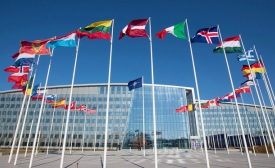alliances

NATO's Barbora Maronkova provides a walk through the Alliance's 70-year history of public engagement.
In his first official trip as secretary of defense, Jim Mattis traveled to East Asia, with scheduled stops in South Korea and Japan. “It is a priority for President Trump’s administration to pay attention to the northwest Pacific,” Mattis told the New York Times. “I am going to get current by listening to them, finding out where their issues are, and then we are going to work together and strengthen our alliance.”
Alone again. Since World War II’s end, Europe has looked at the world through a transatlantic lens. There have been ups and downs in the alliance with the United States, but it was a family relationship built on a sense that we would be there for each other in a crisis and that we are fundamentally like-minded. Donald Trump’s election as U.S. president threatens to bring this to an end – at least for now.
An affiliate of the largest and most powerful Kurdish party in Syria, the Democratic Union Party (PYD), opened its first official mission abroad — in Moscow. Given the amount of military and political support the PYD has received from the United States, this decision is likely to be received with some shock and confusion in the West. But a closer examination of the PYD’s historical experience and core interests suggests that the politics behind a potential realignment with Moscow makes strategic sense.
There has been much debate recently on the possibility of a China-South Korea alliance. The “pro” arguments quite often begin by noting that China has been emerging rapidly in a multi-polar world, making a strategic competition or even stand-off between China and the United States more probable.
From territorial disputes in two of Asia's major seas to the nuclear crisis in North Korea, Chinese and US officials have exchanged sharp words - a trend that analysts say has heightened China's frustration over what it perceives as intensifying efforts to contain its rise.







